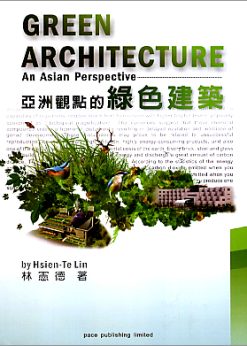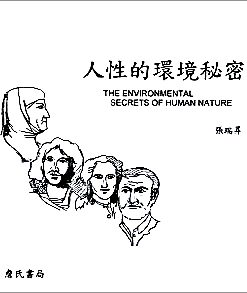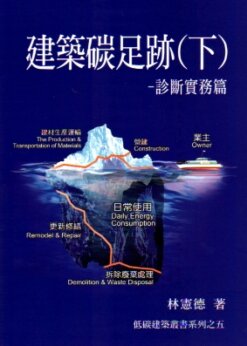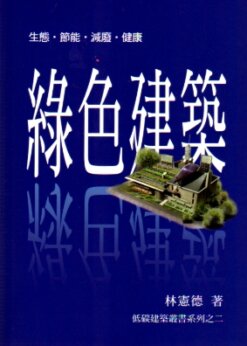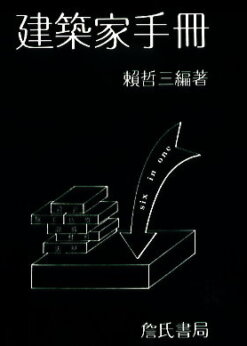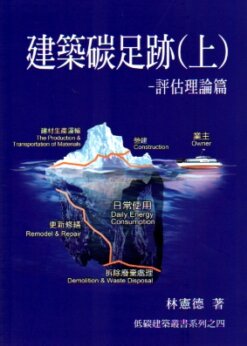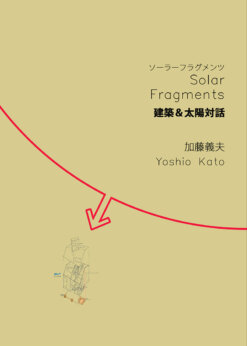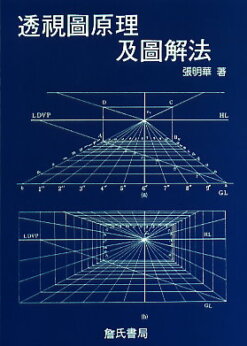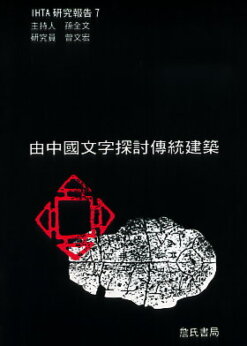Reading the Five Dimensions of the Landscape:閱讀地景的五個維度
NT$700 原始價格:NT$700。NT$595目前價格:NT$595。
81908|王光宇|2024.03
尚有庫存
出版:2024.03
規格:繁中/平裝/296頁/17 x 25/彩色
ISBN:9786269667291
備註:初版
原文作者:Wang Kuang Yu
How a professional understands “landscape” will determine the valuehe/she places on it and the actions he/she will take to intervene. In other words, the view of landscape influences fundamentally how and in what way the landscape profession involves itself in a landscape. The view of landscape gives direction to guide professional performance and also the impetus driving the use of knowledge and technical skills to provide solutions to landscape issues. Indeed, our limited knowledge and understanding of a landscape can limit the creative solutions we can offer.
This book aims to clarify the concept of landscape using the most recent understandings to offer diverse and profound new meanings which can point towards novel creative landscape interventions. In order to build the links between landscape theories and everyday life experience, this book interprets landscape according to five interlayered dimensions.
It was written in two languages, and uses notes, stories, drawings, and photos of the author from the author’s personal experience to make the abstract ideas and theories of landscape easier to understand and communicate to the reader. With this book, the author shares his ideas and aesthetic experiences of the landscape along with notes on landscape reading.
面對一個環境,專業者們怎麼看或認為什麼是「地景」, 就直接影響接下來會怎麼針對那個地方進行所謂「 地景」的調查分析與專業介入。也就是說,對於何謂「地景」的理解,將根本地影響專業者如何進行其「專業介入」,包括介入的方式與內容。此時「地景的觀點」主導了專業知識與技術的應用,就專業力的表現而言,看法賦予「 方向感」,並且是驅動「方法」與「做法」的引擎。
看法的局限,從根源造成專業做法在創意上的限制。
本書強調最根本能夠造就地景環境做法上的創意性與突破性發展,就是先擴充看法!當我們能夠更多元、更豐富、更深刻、更透徹的閱讀地景建立觀點,那麼這種深厚的理解將引導我們從更細膩與創意的角度,來發揮地景專業特有的筆觸。 本書全部以作者手繪圖與攝影,搭配來自實際生活經驗的文字,以中英文並敘,從五個維度來詮釋地景,讓原本學理性及抽象的地景概念能夠比較容易傳達。作者藉著本書與大家分享「閱讀地景」, 包括對「地景」的觀點與審美。
■ Preface 自序
Action Follows View
「看法」決定了「做法」
After many years of practice and teaching in landscape architecture, I noticed the attention and effort devoted to practical knowledge and technical skills. However, this book highlights the concept of landscape.
How a professional understands “landscape” will determine the value he/she places on it and actions he/she will take to intervene. In other words, the view of landscape influences fundamentally how and in what way the landscape profession involves itself in a landscape. The view of landscape gives direction guiding the professional performance, and also the impetus driving the use of knowledge and technical skills to provide solutions to landscape issues. Indeed, the limited views of what we see and know about a landscape result in limits to creative solutions to landscape.
This book aims to clarify the concept of landscape by exploring the fundamental questions about the nature of a landscape and its constituents. Since providing direct answers can stifle inquiry, the intention is to retain constantly meaningful questions about what landscape is which can open up fruitful and ever more valuable explorations.
There has been an abundance of research and theories providing the knowledge on which the ideas of landscape are founded; however, these theoretical discourses might be too abstract to fit with people’s personal experience of landscape. On the other hand, landscape is also a common topic where everyone seems to have his or her own ideas and experiences, but finds it difficult to make their ideas clear. To build the links between landscape theories and everyday life experience, this book interprets landscape according to five interlayered dimensions, through my notes, drawings, and photos from my personal experience and stories to make the abstract ideas and theories of landscape easier to understand and to communicate to the reader.
Before the era of digital cameras, a roll of film could only take 24 or 36 photos, so each photo was taken after carefully considering the reason for taking it. Thus, each photo conveyed the specific and strong point of view of the photographer. Today, digital cameras and mobile phones make photography easy and fast. One can press the shutter many times in a scene, but the point of view between one photo and another is not discernible. So, when I travel, I still have the habit of carrying a small sketchbook and pencils (some colored) and fountain pens with me, in addition to a camera. By taking notes, photos and making sketches, I can both represent my observation, understanding, reading and interpretation of the landscape and, very importantly, also note how I feel at the moment. The idea for the five dimensions of landscape arose from these practices, combined with landscape theories.
In order to share with more readers, the book was written in two languages; however, the texts of the two languages are not necessarily expressed in word-for-word or sentence-by-sentence translation, given that the ideas are not delineated and expressed in exactly the same way in each language. Nonetheless, each language can express the ideas of the five dimensions of landscape through thematic chapters and sections.
The book is based on my personal experience and stories of landscape. Through the sketches and photos I made to combine with the texts, I share my notes and ideas and also aesthetic experience of the landscape. Through interpreting landscape using the five interlayered dimensions, I hope to point to new perspectives for landscape architecture and how they can intervene within a landscape.
從事地景專業實務以及專業教育工作許多年,發現對於如何提升專業能力的認知,許多重心都著眼於規劃設計的應用性知識與技術層面,然而本書所強調的是從概念性層面談地景 (landscape)與地景專業。
面對一個環境,專業者們怎麼看或認為什麼是「地景」,就直接影響他/她所認定的地景價值,以及接下來會怎麼針對那個地方進行所謂「地景」的調查分析與改善。也就是說,對於何謂「地景」的理解,將根本地影響專業者如何進行其「專業介入」,包括介入的方式與內容。此時「地景的觀點」主導了專業知識與技術的應用,我們對何謂地景的看法決定了我們在專業上實際的做法。由此可知就專業力的表現而言,看法賦予「方向感」,並且是驅動「方法」與「做法」的引擎。看法的侷限,從根源上造成創意性做法的限制。
本書的重點在於對「何謂地景」這個問題的探索,而讓它持續保持做為一個有意義的問題(question)或許比直接的解答(answer)更有價值。因為一個直接的解答將知識畫下句點,但一個有意義的問題則開啟更豐富的知識探索。
關於「地景」,從學術與專業角度,有許多理論與研究,為這個主題提供了知識基礎,然而這些學理上的論述可能過於抽象而致脫離了與人們真實生活經驗的連結; 另一方面從大眾的角度,「地景」似乎大家都自認為能夠說上一些,但是它看似簡單其實複雜,因為大家都不容易將它說得清楚。為求在理論架構與生活連結性這兩方面能夠獲得平衡,本書以五個維度的觀點,經由小單元的真實生活故事引導,來解析及梳理何謂「地景」。
以前在沒有數位相機的時代,一捲底片只有24張或36張,由於可以拍攝的數量不多,因此拍攝每一張照片都得仔細考慮畫面的選取,這也使得每張照片具有拍攝者的強烈意識與觀點。現在使用數位相機與手機拍照既方便又快速,有時對著某個畫面按下無數次快門,但一張照片與另一張照片之間的觀點卻說不上來。因此個人在旅行途中,除了相機之外還有習慣帶著小素描本跟一些鉛筆、色筆、鋼筆及代針筆等等,經由筆記、攝影與速寫的筆下,呈現對於地景的觀察、理解、閱讀與詮釋,非常重要的,當然也包括表達當下的感受。地景的概念與其五個維度的想法,也就隨著這些經歷以及經由攝影與速寫的過程而浮現。
為了能與更多人分享這些有關地景的想法,本書採中英文並敘方式來撰寫,但是在兩種語言之間並不求逐字逐句的對照方式呈現,主要以地景五個維度的概念能夠經由各個主題章節與小節來傳達為著眼點。基本上不同語言的思考與表達方式並不盡然相同,習慣中文或英文閱讀的讀者各自可以循著中文及英文的內容來閱讀,當然讀者也可以同時從兩種語言來閱讀本書對於地景觀點的中文與英文表達。
本書全部以作者手繪圖與攝影,搭配來自實際生活經驗的文字說明,就像是地景的筆記,與大家分享「閱讀地景」這件事,包括對地景的觀點與審美,同時經由梳理地景五個維度的概念,期望為地景建築(landscape architecture)拓展專業新視野與新領域。
Preface: Action Follows View
1.Reading the Landscape Through its Five Dimensions
The Reading of the Landscape
Landscape has Five Interlayering Dimensions
2.The First Dimension: The Landscape of Physicality and Materiality
The Physical Landscape
Reading the First Dimension of the Landscape
Environmental Elements
Traits and Properties
Composition and Configuration
Modules and Types
Expressing the First Dimension of the Landscape
Map and Plan
Elevation and Section
Physical and Digital Models
Text
Still and Moving Images
Drawing and Painting
3.The Second Dimension: The Landscape of Cultural Meaning
The World We See Through our Cultural Lens
The Internalization of Culture Within a Person
The Tangible and Intangible Cultural Forms and Contents
The Interaction of the Internalized Cultural Perception and the Cultural
Forms and Contents
The Landscape Composed by Stories
The Landscape in Literature, the Literary Landscape
The Landscape of Symbols and Signs
The Cultural Symbols of a “Pastoral Landscape”: Being in the Real
Environment and Trying to Break Through the Limitations of Reality
The Cultural Symbols of a “Natural Landscape”: Primitivity and Danger, or
Purity and Admirability?
4.The Third Dimension: The Landscape of Feelings
Feelings: The Origin of Peoples’ Awareness of the Surroundings
Feelings Fade Away as Knowledge and Technology Prevail
Knowledge cannot Replace Sensation for Our Comprehension of Landscape
Culture: An Asset that can also be a Burden
The Landscape of Sensation
Olive Trees and Cicada Chirping at the Acropolis
Scents of the Pacific Northwest
The Landscape of Memory and Sentiment
The Realistic and Imagined Statue of Liberty
The Landscape of Memories: Traveling with Students
A Landscape Memory in a Small Town in France
Interact with the Environment with Senses Open
5.The Fourth Dimension: The Landscape of Contextuality
The Invisible Landscape
The Invisible Hands Behind Landscapes
The Value of Landscape Lies in Its Context
Preserving the Value of a Landscape: Aiming at the Elements or the
Relationships?
Preserving the Character of a Landscape: Aiming at the Forms or the
Contextual Relationships?
Landscape Enrooted in Locality and Embedded in Context
The Enrooted and Rootless Landscape
The Landscape of Food
The Taste of Wine
The Price and Value of Tofu Soup
Does the Zen Garden of Ryoan-Ji Still Exist?
6.The Fifth Dimension: The Landscape of Dynamism
There are no Bystanders in a Landscape
Landscape as a Theatrical Play
The Sum of the Static Elements will not Add Up to a Dynamic Landscape
Play, and You will Discover New Things
What to Design for a Landscape Design?
7.New Perspectives of Landscape Architecture Through the Five Dimensions
Re-understanding the Meaning and Beauty of Gardens from Multiple
Dimensions
Opening Up a New Perspective for the Landscape Profession
自序:看法決定了做法
1.從五個維度來閱讀地景
閱讀地景
地景包含五個同時交織的維度
2.地景的第一維度:看得見摸得著的地景
地景的物質層面
閱讀第一維度
環境元素
特質與屬性
構圖與分布
模式與類型
第一維度的讀取與表達
地圖、平面圖
立面圖、剖面圖
實體模型、數值模型
文字
靜態與動態影像
素描、繪畫
3.地景的第二維度:文化解讀的地景
每個人戴上「文化的眼鏡」所認識的世界
個人內在條件:文化的內化
文化外顯因素:有形與無形的文化形式與內容
具文化內化的個人,接觸外在環境有形與無形的文化形式與內容而產生
的互動
故事累積出地景
文學中的地景 地景的文學性
符號與象徵的地景
「田園」地景的文化象徵:置身於真實環境,但試圖超越真實環境限制
「自然」地景的文化象徵:野蠻與危險或者純淨與美好
4.地景的第三維度:感覺的地景
感覺: 人們認識環境的起源
感覺隨知識與科技普及而沉潛
知識無法取代感覺來認識地景
文化既是資產也可能是包袱
感官的地景
衛城的橄欖樹與蟬叫聲
北美洲太平洋西北地區的氣味
記憶與情感的地景
真實與非真實的自由女神
帶著學生一起旅行的地景記憶
在法國小鎮的一段生活記憶
打開感覺之窗與環境對話
5.地景的第四維度:涵構關係的地景
看不見的地景
地景來自看不見的手
地景的價值在於涵構關係
地景價值:保護個別元素或保護涵構關係?
地景特質:保護形式或保護涵構關係?
著根於涵構的地景
著根與失根的地景
飲食地景
紅酒的滋味
湯豆腐的價格與價值
龍安寺的枯山水庭園還依然存在嗎?
6.地景的第五維度:整體動態進行的地景
地景中沒有人是旁觀者
地景如同演出中的劇場
靜態元素的總和無法構成地景的動態
玩一下 你會有新的收穫
地景設計是要設計甚麼?
7.從五個維度開啟地景專業新視野
從多元維度重新認識庭園的意義與美
開啟地景專業新視野
◎ 王光宇(Wang Kuang Yu)
Dr. Kuang-Yu Wang is a professor and director in the Department of Landscape Architecture, Chung
Yuan University where, beside teaching, he activelyparticipates in various public landscape projects and serves on juries for landscape awards. He has a background in economics, landscape architecture, and geography and believes that a landscape professional should think like a philosopher, distinguishing the nature and value of things while acting like an engineer, embodying ideals through valid methods, knowledge, and techniques. And above all, a landscape professional should have the heart of an artist, pursuing creativity and beauty.
具經濟學、地景建築以及地理學背景。認為地景專業應具備哲學家的思維,以明辨價值與事情的本質。工程師的訓練,能夠有求真的精神、務實的態度和實踐理想所需要的方法、知識與技術。非常重要的是還需要擁有一顆藝術家的心,致力追求創意與美。除教學之外,並且活躍於推動各類具創新性的地景相關計畫,以及擔任地景專業獎項評審等工作。
現任教於中原大學地景建築學系並擔任系主任。




